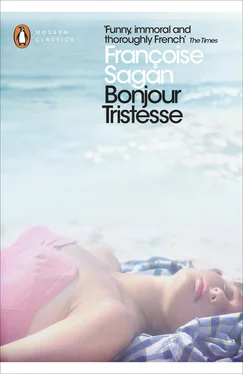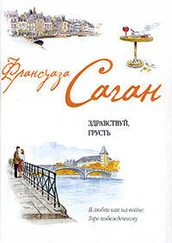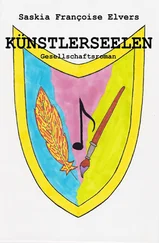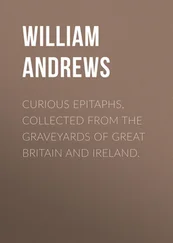The English edition was widely and, on the whole, favourably reviewed (though John Davenport, writing in the Observer of 15 May 1955, opined that it was a ‘curiously vulgar little work […] put together with meretricious skill’ and predicted that ‘it will cause a flutter in the dovecots’). Where reviewers mentioned Ash’s skill as a translator, it was generally with warm approbation, in spite or because of an awareness that the translation represented an abbreviated version of the original: Peter Quennell in the Daily Mail of 20 May 1955 commented that, while the translation was ‘unusually good […] I observe on many pages the traces of a mysterious blue pencil. A number of sentences have been removed as too frank or too suggestive for the innocent English public.’ In the view of John Raymond, writing the following day in the New Statesman and Nation , Ash ‘has not been afraid to pare and clip the text to suit the English reader’, though the one example he gives refers to an innocuous enough phrase at the end of a paragraph in Part One, Chapter Two (translating as ‘with arms that felt heavy and a dry mouth’) the omission of which he sees as a stylistic improvement.
When, in the Spectator of 17 August 1956, Quennell reviews the English version of Sagan’s second novel, Un certain sourire , he states: ‘[H]er London publishers […] found it expedient to remove one or two passages from the translated version of Bonjour Tristesse .’ If John Murray’s did implement changes on the limited scale he indicates (and their archives reveal only their extreme satisfaction with Ash’s work), the comment in Quennell’s earlier review that the traces of a mysterious blue pencil were visible on ‘many’ pages suggests that the blue pencil was largely wielded by Ash herself on the French original, from which well over one hundred lines were cut. Some of the omissions involve quite short phrases, but others are substantial. The latter fall into two categories: firstly, sections of the text which might be deemed overtly sexual, and secondly, portions of detailed analysis.
Sagan may by no stretch of the imagination be called a sexually explicit writer, but in the Britain of the 1950s outlooks were prim. Indeed, as is well known, in 1960 Penguin were prosecuted (unsuccessfully) under the Obscene Publications Act over their intention to publish in Britain, unexpurgated, the novel by D. H. Lawrence Lady Chatterley’s Lover . Lawrence’s novel is much more sexually focused than Bonjour Tristesse , but each was subject, albeit to a different degree, to the lingering strait-laced paternalism of the time and place which has for ever been encapsulated in the question of the prosecution counsel to the jury at the Chatterley trial: ‘Is it a book that you would […] wish your wife or your servants to read?’ Thus, six years earlier, it had been thought proper to omit from the English translation Sagan’s quite lyrical yet distinctly unanatomical references to love-making, notably in Chapters Four and Six of Part Two, as well as to excise or tone down other sexual allusions: for example Cécile, the seventeen-year-old heroine, is daringly frank (too frank for Ash, no doubt) in her condemnation of the life-choices of Cyril’s complacent widowed mother (Part One, Chapter Four). She also crosses swords lewdly with the dreadful Madame Webb, and although in that instance her play on the word maquereau , meaning both ‘mackerel’ and ‘pimp’, cannot be rendered directly into English, Ash’s translation does not seek to reflect its double-entendre in any way; Cécile merely tells the reader: ‘[I] did not know what to answer without being too offensive.’
The longest single omission is in Part Two, Chapter Six where, after a predictably cut-down version of Cécile and Cyril’s love-making in a little boat, nineteen lines are left out, an entire discussion in which Cécile deconstructs the expression ‘to make love’. While Ash may have deemed the topic unsuitable, it is also possible that she had little patience (or felt her readers would have) with the analysis as such. In fact she quite readily pares down analytic sections and in doing so short-changes us on one of Cécile’s principal traits, her intelligent, sometimes tormented reflectiveness, evident from the opening paragraph and liable to be pushed to extremes of convoluted self-interrogation. Thus she omits, for example, several lines at the end of Part One, Chapter Two in which Cécile discusses her attachment to some words of Oscar Wilde’s, and she condenses Cécile’s long discussion, strategically placed at the beginning of Part Two, of her newly discovered inner duality.
Aside from her treatment of the more erotic sections and her seeming impatience with Gallic navel-gazing, Ash frequently cuts out what she deems to be redundant phraseology, taking upon herself the role of editor of Sagan’s prose rather than the faithful translator of it. All the same, when the question arose of finding a translator for Un certain sourire , John Murray unhesitatingly selected her again, though Dutton in the United States preferred this time to make separate arrangements. Dutton’s decision was perhaps not surprising, in view of the fact that, although the American publisher had part-paid for and published Ash’s translation of Bonjour tristesse as agreed, it had been issued to the American market with most of the important omissions made good and with numerous alterations to the English. So although John Murray offered Ash’s translation of Un certain sourire to Dutton, who pronounced it ‘excellent’, they chose as their translator Anne Green. Green’s pacey translation is somewhat less coy than Ash’s. Arguably, however, in spite of its topic (the affair between the young student Dominique and her boyfriend’s much older, married uncle Luc), Un certain sourire contains less in its detail that was liable to create a flutter in the dovecots, and what risked doing so was mostly dealt with in Ash’s usual no-nonsense way: thus she has Luc in bed with Dominique place his hand on her side and not, as in the French, her hip, and she sees fit to apply a little further censoring of what immediately follows.
It may be thought fortunate that what appears to have been an early working title for Sagan’s second novel, Solitude aux hanches étroites (‘loneliness with narrow hips’), was dropped in favour of Un certain sourire, this being a phrase used by Dominique near the end of the novel. As a title for the English translation, Ash initially suggested A Way of Smiling , and there were other proposals. In March 1956 Sagan herself reportedly preferred the title in English to be A Certain Smile , so it was perhaps journalistic spin that led Nancy Spain to announce to readers of the Daily Mail of 31 March: ‘A bottle of bubbly if you can name Miss Sagan’s naughty book,’ and to go on: ‘Her English publishers have not yet decided upon a title. Can you think of one better than A Certain Smile ?’ It seems nobody could.
One appreciative English reviewer of Sagan’s second novel refers to its being ‘diamond-bright in style in Irene Ash’s translation’. It might equally be said of both her translations that Ash’s language has a cut-glass quality about it, reflecting an upper-middle-class milieu familiar to earlier cohorts of English readers, a world of secluded beaches, bathing things, afternoon tea and country houses, and a style of expression to match, existing in conjunction with the torrid heat of the Mediterranean, the mustiness prevailing elsewhere in the French provinces and the atmospheric student cafés of the Quartier Latin. Some of Ash’s vocabulary, now dated, risks being a distraction to today’s reader: characters cavil at things and chaff one another; Cyril fears he may be a cad; Elsa’s eye-black runs; Dominique lodges in a ‘pension’ and blows her money on a pair of slacks; the seductive Luc wears a waistcoat (in the French it is in fact a jacket); and everyone at some point or other is referred to as being gay. Yet despite all this, the three translations – Ash’s two and Green’s one – are to be admired for having served over many years as polished, readable and intelligent versions. The new translations offered here present both novels in entirely unabridged form for English-speaking readers and it is hoped they will encourage and help at least some to sample the original French for themselves; they have been undertaken with a view also to giving a fresh new dress, after almost sixty years, to the young Sagan’s remarkably stylish and perceptive treatment of themes that are still highly contemporary.
Читать дальше












